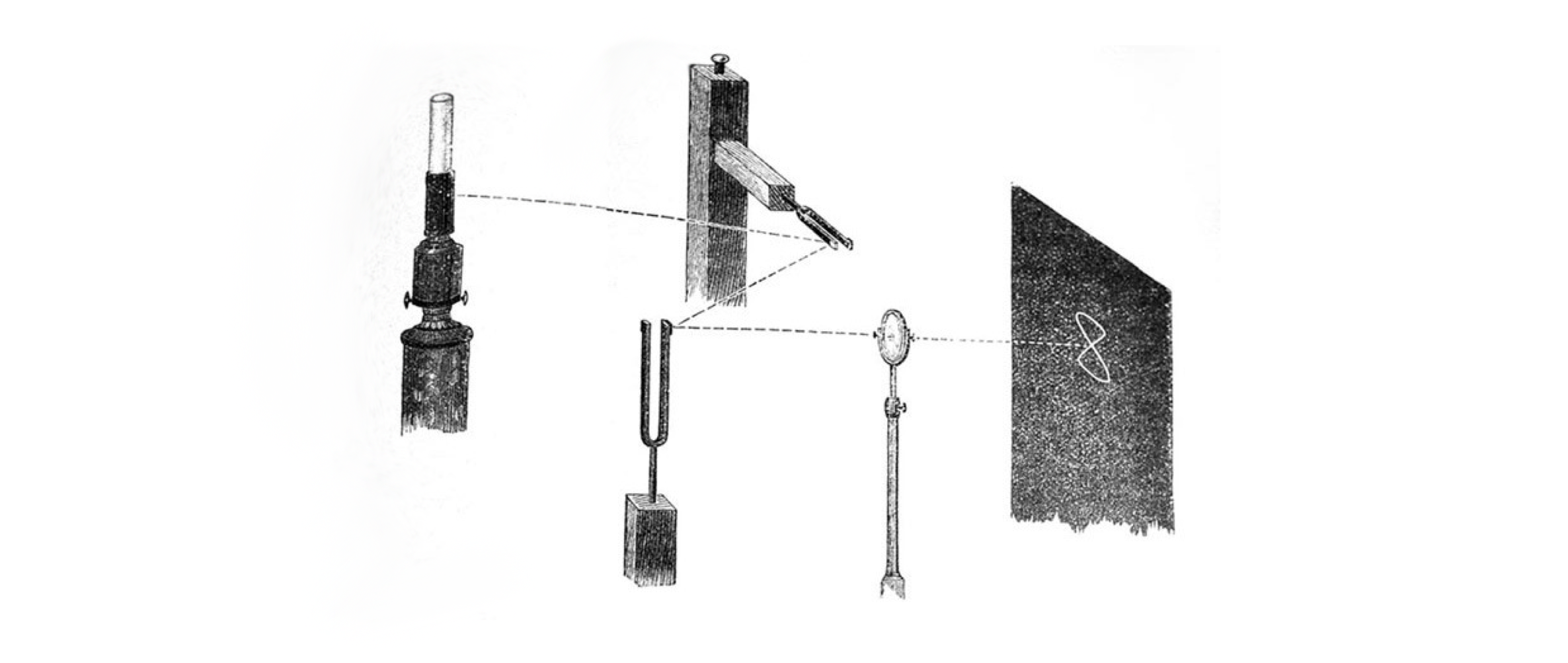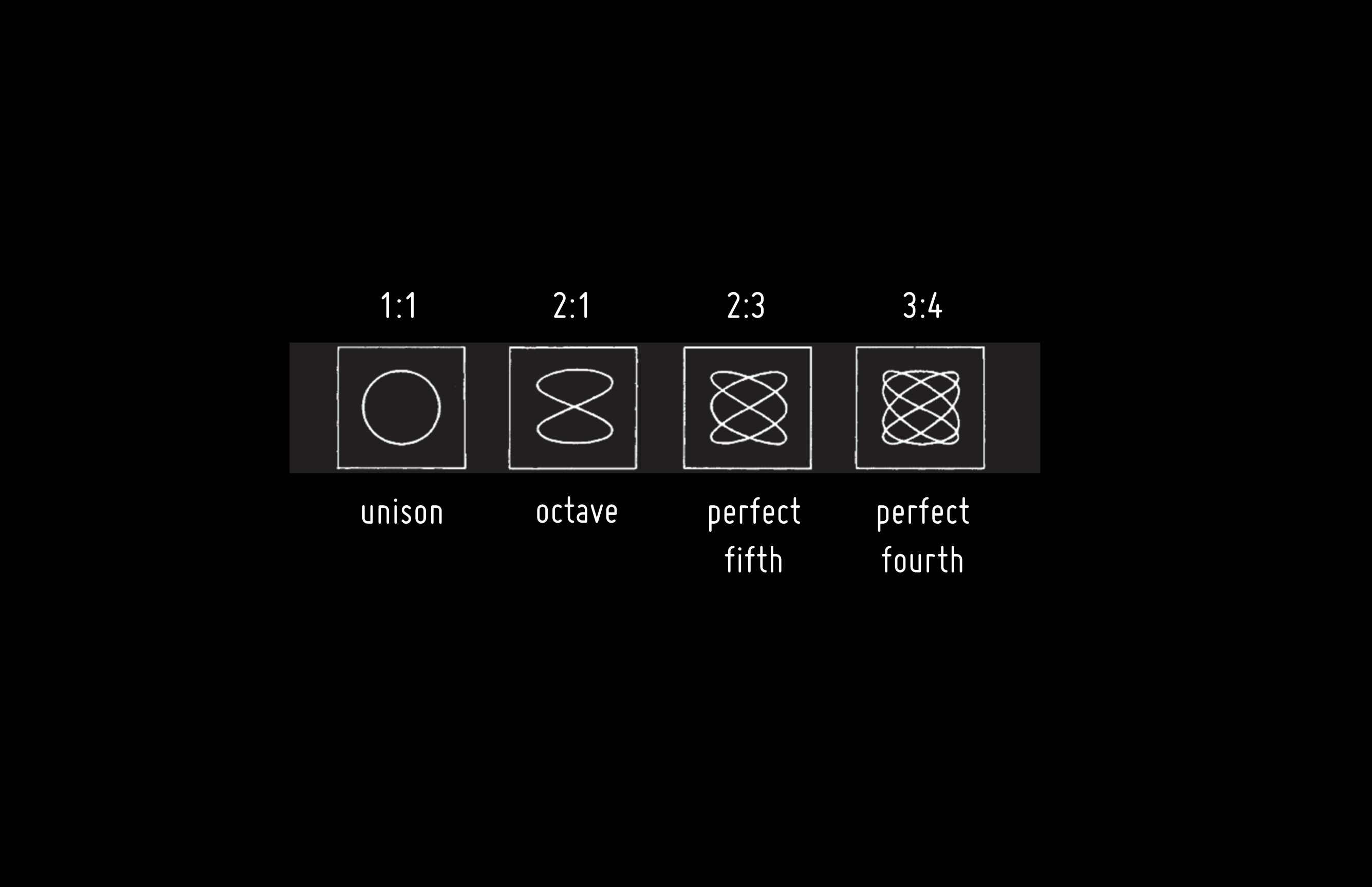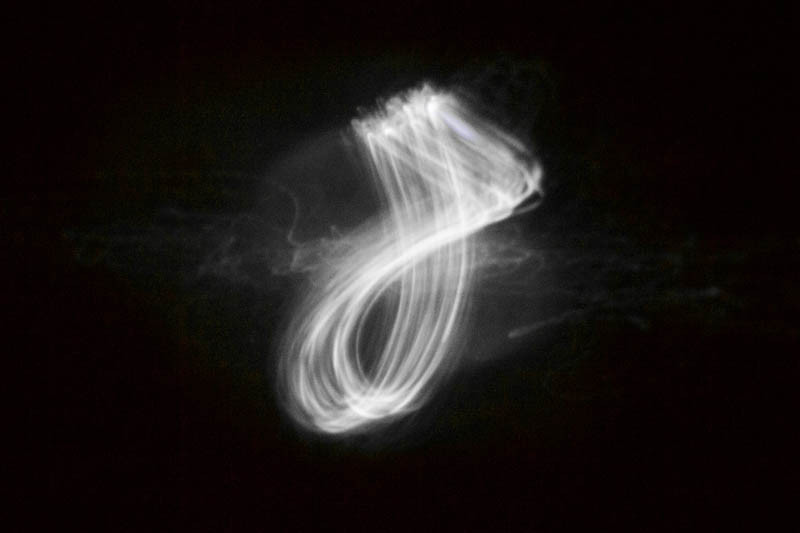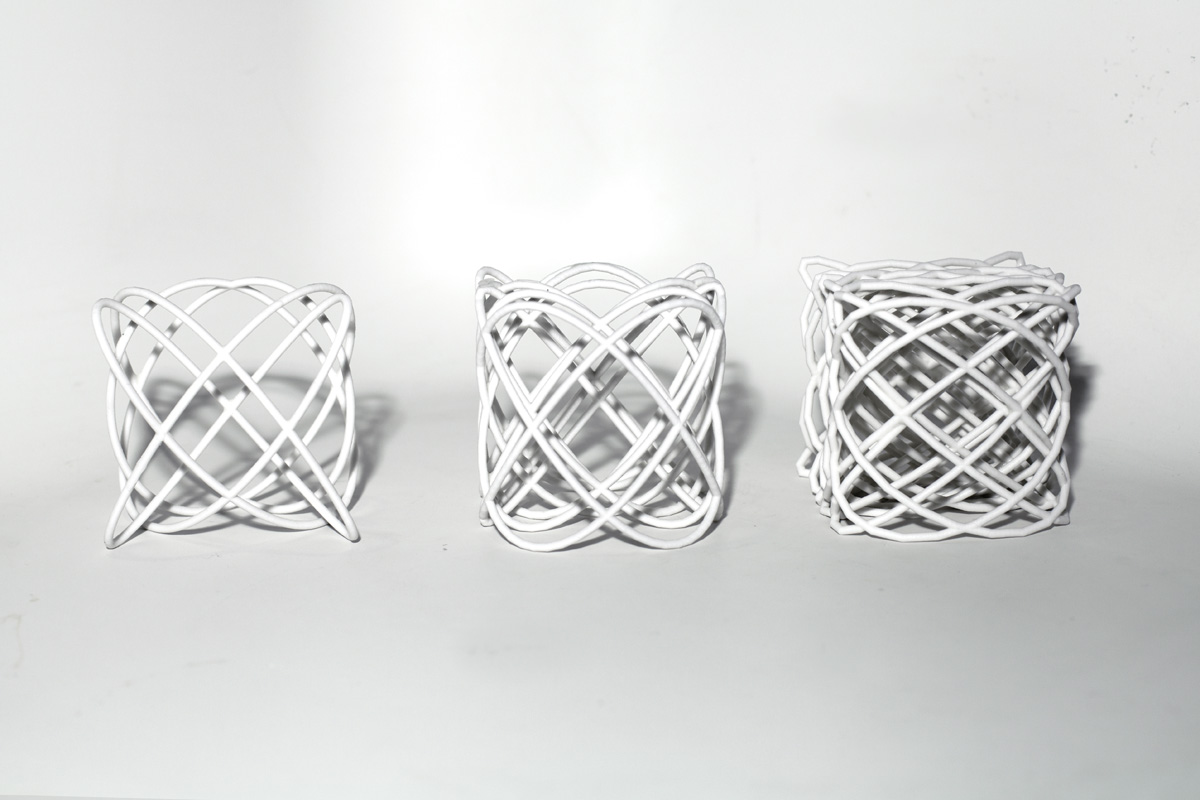An exploration of musical harmony through interaction with Lissajous figures.

Device by mathematician Jules Lissajous.
Two tuning forks are placed orthogonally, each with a mirror attached to its tip. A beam of light is directed to the first mirror, reflected to the second one and finally to a screen. Tuning forks of frequencies related by simple integer ratios generate harmonic patterns:

The tuning forks are replaced by speakers, connected to microphones, making frequencies variable and adding interactivity.
Below, a print generated by using photo-sensitive paper as a screen.


The analog system is replaced by a digital one (two synthesized tones, one voice input), expanding the device into the third dimension. Sets of three notes comprise musical chords, defined by specific ratios between their frequencies.
To the left, 3D-printed patterns representing Major(4:5:6), Minor(10:12:15), and Diminished (45:54:64)chords. Note: ratios for notes in Just Intonation.
Above, a Major chord pattern displayed on a volumetric display
Recent exhibitions
- September 12 - 30. Buenos Aires, Argentina, Noviembre Electrónico
- September 26 - 28. Brooklyn, NY, USA,
Dumbo Arts Festival - September 12 - 30. Buenos Aires, Argentina, Bienal Kosice
- August 22 - October 1st. São Paulo, Brazil,
FILE 2014